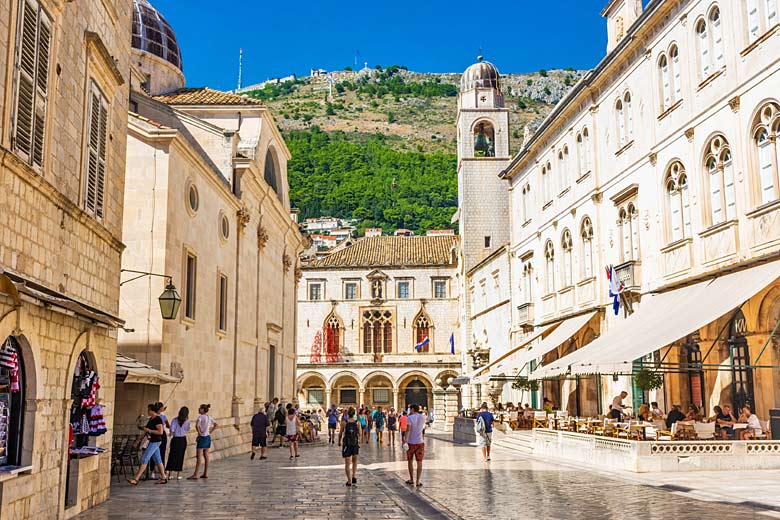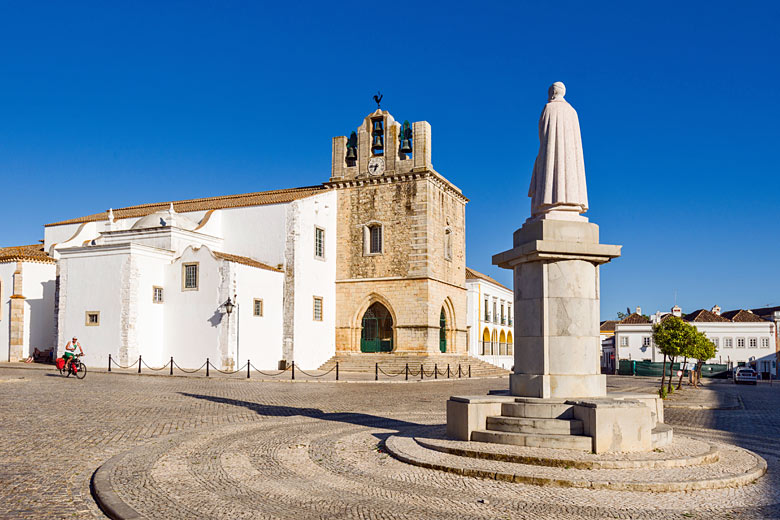Top 8 secrets of Kos, Greece
The Greek island of Kos needs very little introduction as a summer holiday destination. Its sun-drenched beaches and warm waters are well-known and much-loved, however, there's more to this ancient volcanic island than first meets the eye.
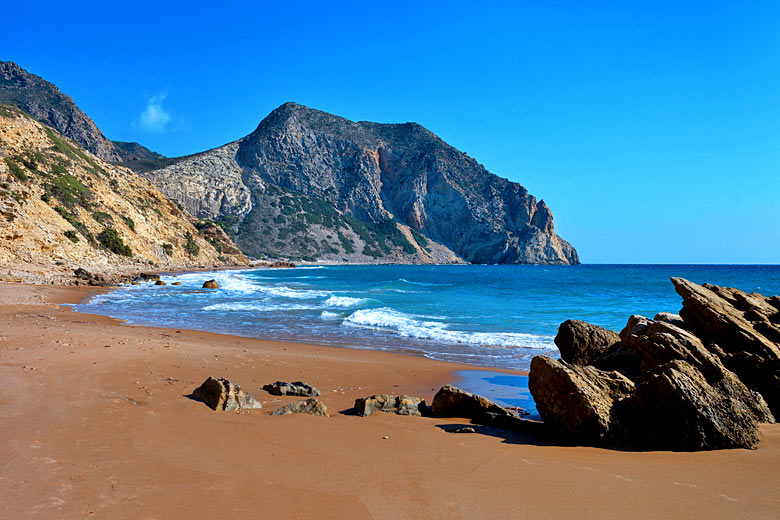
Here, we look at eight of the top secrets of Kos, from secluded beaches to historic attractions, to help you dig a little deeper, with something for every age and interest.
Holidays to Kos: thankfully, it's incredibly easy to get to with options for every budget. Check out the latest offers on breaks to Kos from airports across the UK with Jet2holidays*.
1. Hitting the beach could make you look younger
During the 1930s, an Italian archaeologist discovered a thermal spring that leaked mineral-rich waters into the Aegean Sea. Boulders were placed around the water source to make a bathing pool high in potassium, magnesium and sulphur.
As waves filter though, seawater cools and refreshes the pumping hot spring. Therma Beach gets busy in high summer but it's blissfully romantic during quieter sunset periods.
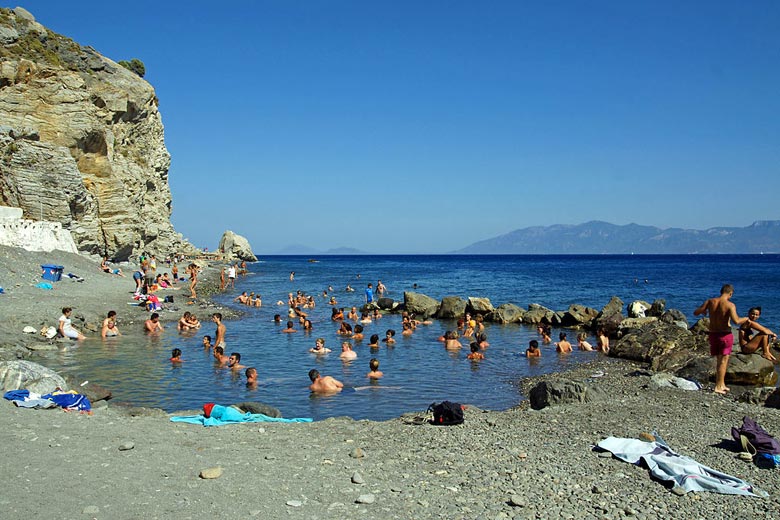
Better still, the spring's minerality can allegedly take five years off the average holidaymaker. That's a good job because the nearby beach of Agios Fokas, one of 20 along Kos's 70-mile coastline, is popular with bare-all naturists.
2. You can wave your hands in the air in Kardamena
The town of Kardemena has enough watersports, aqua parks and nightclubs to rival a Balearic resort. Mere minutes from the airports, revellers could be sinking Piña Coladas four hours after taking off from the UK or Ireland.
By night, bars pair shots and games with grilled squid and TV sports. By day, two miles of golden sands aid recovery from the previous evening's excesses. Ongoing excavations at Kardamena's Temple of Apollo offer a cultural flair to a cracking day - and night - out.
3. Kos was Turkish for 400 years
Persians and Venetians held sway on Kos before the Turkish Ottoman Empire ruled for four centuries. Mosque minarets soar skyward, while Turkish baths like Artemis offer full hamam steambath experiences alongside anti-stress massages and mud wraps.

The ivy-strewn village of Platani hosts Kos's largest Turkish population. Here restaurant Arap has been serving Turkish-inspired dishes since 1955, including Iskender Kebab, a meaty wrap stuffed with yoghurt and tomatoes.
Fancy swapping retsina for raki for an entire day? The hip Turkish resort of Bodrum is a 45-minute boat ride from Kos Town.
4. There are secluded beaches aplenty
It would take two hours to circumnavigate Kos by its little coastal roads. En route are more than a dozen write-home-about coves.
The sound of lapping waves trumps chirping phones at Lagades Beach. Behind the endless stretch of silken sand, real local eateries serve dolmades, keftedes and Greek salads - not the Full English.
Limnionas Beach is even wilder. Think crystalline shallows meets golden sands, with a single taverna against the rocky backdrop.
Mastichari Beach is so long that there's space for everyone - including families shading under beach tavernas and tamarisk trees.
5. Its prettiest historic sight raises the dead
The doctor-demigod Asclepius was so skilled it was said he could raise patients from the dead. The sprawling ruined town dedicated to him, Asclepeion, was sited to capture healthy breezes and mountain views, in order to assist patients in their recovery.
The site is now an Instagram fantasy of Ancient Greece. Think marble steps, fallen columns and a crumbling amphitheatre. Several temples and a - at the time - cutting-edge medical school remain more intact.
As the site is open from 8am until 7pm, early starts or sunset strolls mark the best time to visit.
6. Fine wines have been sipped for millennia
In the time of Hippocrates - a founding father of medicine born on Kos - island wines were renowned across the Mediterranean. A resurgence in viticulture has combined with a rediscovery of local grapes, including flinty whites Assyrtiko and Malagouzia.
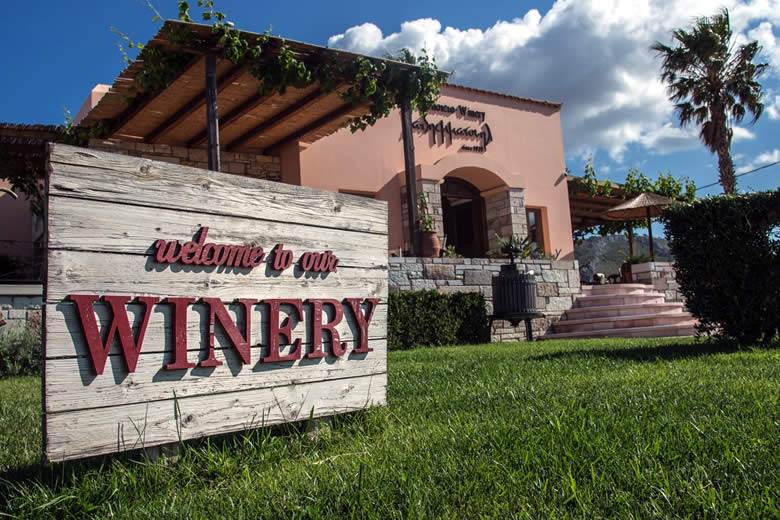
In 2004, Hatziemmanouil Vineyards opened its three-level winery to visitors. Tastings can be followed by mountain strolls through the vines.
The Triantafyllopoulou vineyards were only planted in 1996 near the cute coastal town of Zipari. Since then their Chardonnays and Sauvignon Blancs - both laced with local grapes - have been paired with island dishes like pitarridia (a meaty lasagne) and katimeria (a twisted cheese and honey pie).
7. Kids can play Robin Hood in Neratzia Castle
During the 15th century the Knights of St John built Neratzia Castle to control the straits between Greece and Turkey.
Two vast precincts boast gun ports, battlements and bastions - and can host kids eager to fire imaginary arrows on invading tourists below. A disused moat and drawbridge provides further outdoor fun, but watch out for sharp drops.

The archaeological site would be more intact were it not for an explosion in the gunpowder room in 1816. The resulting boom knocked down half the castle and could be heard across the sea in Bodrum.
8. Its little brother bobs 30 minutes away
The little island of Kalymnos feels like Kos 30 years ago. A regular ferry from Kos Town transports travellers back in time to a world of fishing boats and grazing goats.
The island remains famous for its sponge-diving tradition, where locals would free-dive to the seabed to harvest the 'Kalymnian Gold'. Sponges are available to buy in the main port.
Inland, fertile valleys tempt hikers with green trails through fragrant herbs and citrus groves. When the Kalymnos heats up, lonely coves - no beach beds or Calippo stands here - offer watery respite. Missing your luxury hotel? The boat home to Kos takes just 30 minutes.
Weather in Kos, Greece
Situated in the eastern Med, Kos enjoys longer, hotter summers than many of its island siblings further west. It is doused in sunshine throughout summer with July seeing a whopping 14 hours on average per day.
| Jan | Feb | Mar | Apr | May | Jun | Jul | Aug | Sep | Oct | Nov | Dec | |
|---|---|---|---|---|---|---|---|---|---|---|---|---|
| Maximum daytime temperature °F | ||||||||||||
| Hours of sunshine (daily) | ||||||||||||
| Days with some rainfall | ||||||||||||
| Sea temperature °F |
What's more, days are dry, heat and humidity is high but not stifling, and the sea is more than comfortably warm - perfect for making the most of those secret beaches. Find out more about the weather in Kos and see when we think is the very best time to go.
Tempted to discover your own secret slice of Kos this summer? Don't miss the latest deals on holidays from Jet2holidays.
More about Kos
- Overview
- Best time to visit
- Weather by month
- 5-day weather forecast
- Destinations
- Travel advice
- Deals & discounts
Kos by month
Jan Feb Mar Apr May Jun Jul Aug Sep Oct Nov Dec
Explore holidays in the sun for less
- Beach holidays
- Family holidays
- City breaks
- Summer holidays
- Winter sun holidays
- Holiday offers
- Top travel brands
- Airlines & flights
- Discount hotels
- Airport parking deals
- TUI
- Jet2holidays
- easyJet holidays
- Love Holidays
- British Airways
Airport parking
- Manchester Airport
- Stansted Airport
- Bristol Airport
- Luton Airport
- Birmingham Airport
- Edinburgh Airport
- Gatwick Airport
- Glasgow Airport
- Newcastle Airport
Airport lounges
- Manchester Airport
- Birmingham Airport
- Bristol Airport
- Edinburgh Airport
- Glasgow Airport
- Heathrow Airport
- Newcastle Airport
- Stansted Airport
- Gatwick Airport
Be inspired
Get your weekly fix of holiday inspiration from some of the world's best travel writers plus save on your next trip with the latest exclusive offers
We promise not to share your details


































